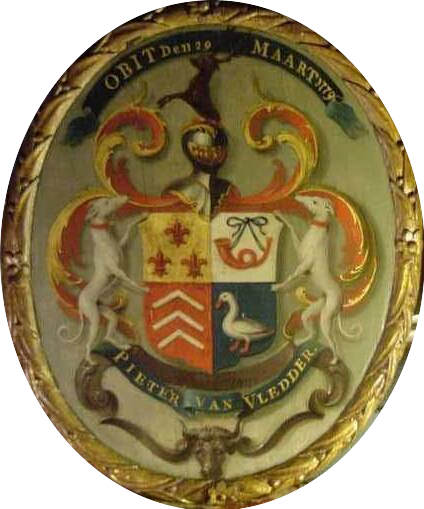Our Coat of Arms
By far the most important element that connects us, is our blood line and the name we share. But we also have our own coat of arms. We don’t know exactly the origin of our coat of arms but believe it was designed in the 18th century by order of Pieter van Vledder. We assume this because our coat of arms is parented with the coat of arms of the Van Meyrik family and Pieter had married Maria van Meyrik. This assumption is supported by the fact that the mourning plate below is the oldest object found with our coat of arms. It was placed in the new church in Amsterdam (next to the royal palace) at the funeral of Pieter van Vledder in 1779 and is in the possession of the family now.

Design of the coat of arms Quartered. I, In gold, three red French fleurs-de-lis. II, In silver, a red hunting horn. III In red, three silver chevrons. IV In blue, a goose in its natural colours, beak and feet in red. Helmet: emerging deer in natural colour. Covers: gold and red. Shield holders: 2 hounds in natural colour (silver), red collar with golden ring.
The meaning of the coat of arms is as follows: It stands for hunting, the deer combined with the horn and the hounds as shield holders. The lily is a symbol of peace (peace of the soul) and higher spirit, the main part of the coat of arms. The chevron (here emphasized by the number 3) stands for determination and trustworthiness.The goose represents alertness and sacrifice.
Objects with our coat of arms are inherited and passed on from one generation to the next. Or new objects are made. Objects with our coat of arms can be found in each of the three continents where the Van Vledders live